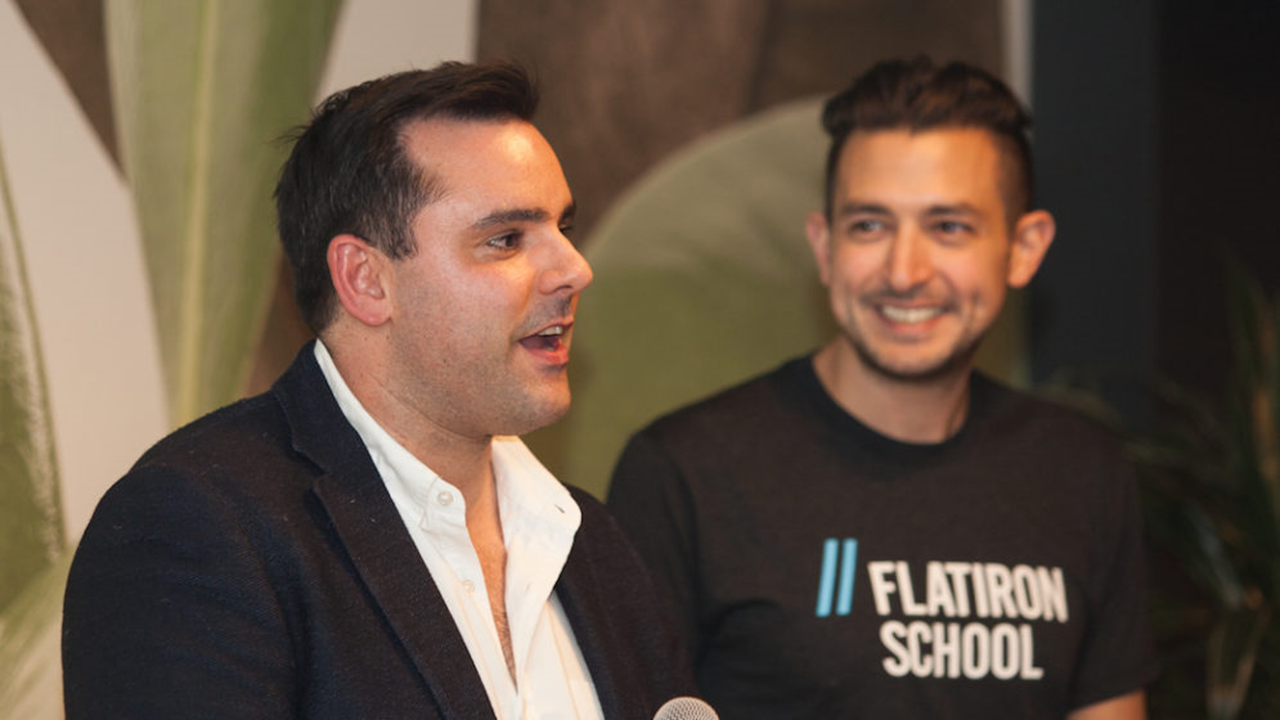How Mission Helps You Build the Best Team

We sat down with Adam Enbar, serial entrepreneur and investor, who shared his thoughts on the power of mission. Having a well-defined mission helped him grow his startup from a small idea into the Flatiron School, a rapidly growing coding school that is disrupting higher education. Launched in 2012, the coding academy raised over $14 million and grew to over 300 employees within five years. In 2017, WeWork acquired Flatiron with the intent of furthering its mission. Throughout the journey, Enbar learned firsthand how your startup’s mission attracts talent and can help you build the best team to scale effectively.
2 Key Ways Mission Helps You Build the Best Team
- Defining and Reinforcing Your Mission Helps You Attract and Retain Talent
- Mission Motivates by Connecting Work to a Larger Ideal
 Defining and Reinforcing Your Mission Helps You Attract and Retain Talent
Defining and Reinforcing Your Mission Helps You Attract and Retain Talent
Enbar learned about the power of mission in his first job post-graduate school at HBS: selling marketing software at HubSpot. By 2014, HubSpot had grown into a global leader of marketing and sales software products and had a successful IPO. But during Enbar’s stint in sales, the startup was still relatively small and scrappy. In that environment, he learned the power of mission. “One of the most powerful lessons I learned at HubSpot is the importance of having a goal—a giant mission.”
Looking back, he credits the strength of HubSpot’s mission with the caliber of talent that the company hired.
How Mission Attracts Talent
HubSpot’s convinced staff that its mission—to “transform the way the world does marketing”—could change the world. “I was making sales calls 80 hours a week,” Enbar recalls. Essentially, “at the end of the day, I was just selling marketing software.” But the work felt important because the product helped small business owners. And HubSpot kept staff focused on that bigger mission.
“Everybody at that company could have made more money elsewhere,” he reflects. They accepted smaller salaries and titles because they felt committed to the larger mission. “It wouldn’t have happened if they said, ‘we’re selling this marketing software, here’s our sales goal for next month.’ Instead, they connected it to a much bigger, more powerful idea.”
By reinforcing the company’s mission and prioritizing culture, HubSpot had the “ability to stretch dollars and bring in great talent.”
Everybody could have made more money elsewhere. But they were there because they believed in it. That was so powerful. HubSpot’s mission gave them the ability to stretch dollars and bring in great talent because people believed in the company.
Adam Enbar
Mission May Attract More Experienced Talent
When building out Flatiron’s founding team, Enbar added a COO relatively early in the process. The startup had just ten employees. He didn’t intend to hire a COO at that point. “I had no job posting for COO. I didn’t think I needed a COO, I was looking for a Head of Marketing.”
But he met a person who was “One of those people that could obviously be successful at anything. She clearly was not a marketer, she was senior.” But Enbar intuited that she would be invaluable in building the rest of the team and added her as COO. His hunch paid off. Her experience and belief in Flatiron’s mission became instrumental in the startup’s success.
Mission May Help You Build a Diverse Team
When building your team, focusing clearly on your startup’s mission may help you attract a more diverse pool of talent. Enbar adds, “don’t discount anyone based on age or experience. In the startup world, we tend to discount gray hair and it’s a crazy mistake. Because there’s a difference between wisdom and intelligence. And wisdom comes from seeing things and being able to bring people onto the team who have seen things before.”
At the same time, he cautions, if you find a mission-driven applicant who lacks experience, don’t discount automatically discount them. “You have a generation of people that are dying to make an impact and are willing to work really, really hard because they care. They’re going to sacrifice salary for social good.”
“Your ability to grow or do anything meaningful is 100% dependent on your ability to bring on the best talent.”
When people believe in the mission and purpose of the company, they work harder, and, as a result, the company often grows faster.
 Mission Motivates by Connecting Work to a Larger Ideal
Mission Motivates by Connecting Work to a Larger Ideal
Enbar worked with his founding team to set tangible goals that directly related to Flatiron’s mission. What’s the difference between mission and strategy? He explains, “a mission is why you exist, and it’s eternal.” Flatiron’s mission “to enable the pursuit of a better life through education” provides the reason for the startup’s existence.
A mission is why you exist, and it’s eternal. A vision is what you want to accomplish.
Adam Enbar
To accomplish Flatiron’s goal to “build an alternative to the current system of higher education,” they began building “a global campus, for life-long learners.” Three things, Enbar explains, “global campus, life long learning, and positive impact, form the three headers for all of our company goals.”
Map Your Mission to Tangible Work
How does Enbar tie Flatiron School’s ideological mission to daily work for staff? Begin by “translating your lofty mission into a ten-year goal.” From there, work backward to create annual goals. He suggests, “Keep zooming in, translating the core mission to monthly and weekly targets, and even to daily work.”
For instance, using Flatiron’s broad goal of establishing global campus, an annual goal might be to open X new locations and introduce a model of co-learning. Enbar specifies further, “all of our online students, all around the world, get access to local We Works to study out of.” Similarly, the goal of lifelong learning could map to launching X part-time programs in a year. And the positive impact goal would correlate to attaining X% job placement or X% gender diversity.
Goals should be ambitious—because you want people to think big—but attainable. If goals are too ambition people get demotivated.
Adam Enbar
Translating Mission into Strategy
To communicate and reinforce the importance of mission Enbar started Growth Leaderboard which identified actions that contribute to growth. These included writing blog posts, hosting meet-ups, speaking at conferences. Anyone at the company could participate. The leaderboard “made it clear that this is what we were focused on.”
Clearly defining your mission aligns your team and optimizes effort. He shared, “people from across every department said ‘okay, we’re focused on growth today’ and it’s clear to me how I can help.” Knowing the company goals at any given moment and how your work relates to it helps teams stay motivated. “It moves the needle in a way that is just impossible,” Enbar believes, “if you don’t have that clarity.”
At Flatiron, any staff member should be able to tie their daily work to a sub-goal, that maps to one of the three larger goals: global campus, lifelong learning, or positive impact. And in turn, those relate back to the vision of “creating alternative education that ties right back up to our mission of enabling a better life through education.”
So whatever you’re doing on any given day, no matter how small it is, or what team you’re on and what your goal is for that month, you should be able to draw a direct line up to the mission.
Adam Enbar
Translate your lofty mission into a ten-year goal, then working backward to annual goals. Keep zooming in, translating the core mission to monthly and weekly targets, and even to daily work.
Adam Enbar

